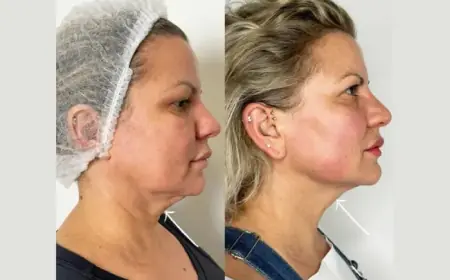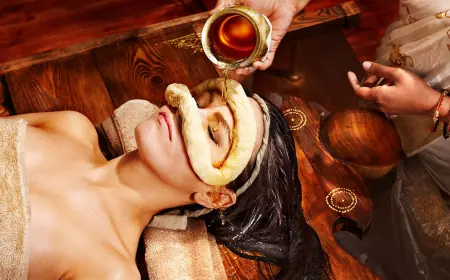Medical Botox Therapy: More Than Just Wrinkle Care
When you hear the word "Botox," you might instantly think of wrinkle reduction and youthful skin. But did you know that Botox has powerful medical applications as well? From easing chronic migraines to treating muscle disorders and excessive sweating, medical Botox therapy in Dubai is helping people find relief from a wide range of health concerns.
Let’s dive into the world of therapeutic Botox—what it is, how it works, and how it’s changing lives far beyond the cosmetic chair.
What Is Medical Botox Therapy?
Medical Botox therapy refers to the use of botulinum toxin (the same substance used in cosmetic procedures) for treating medical conditions. It works by temporarily blocking nerve signals that cause muscle contractions or gland activity.
While cosmetic Botox targets facial muscles to reduce wrinkles, medical Botox goes deeper—calming overactive muscles, nerves, or glands that contribute to chronic symptoms.
FDA-Approved Medical Uses of Botox
Botox has been studied for decades and is approved for various medical conditions, including:
✅ Chronic Migraines
Botox is injected around the head and neck to help prevent migraines in people who suffer 15 or more headache days per month. It can reduce frequency, severity, and reliance on pain medications.
✅ Excessive Sweating (Hyperhidrosis)
Botox blocks the nerve signals that trigger sweat glands, especially in the underarms, palms, or soles of the feet. Relief can last for several months with one session.
✅ Muscle Spasms and Stiffness
Conditions like cervical dystonia (neck spasms), blepharospasm (eyelid twitching), and spasticity from cerebral palsy or stroke respond well to Botox injections.
✅ Overactive Bladder
Botox can relax the bladder muscle, reducing urgency, frequency, and incontinence in patients who don’t respond to medication.
✅ Eye Conditions
For people with strabismus (crossed eyes) or uncontrolled blinking, Botox helps align the eyes and reduce involuntary movement.
How Is Medical Botox Administered?
Medical Botox injections are highly targeted and administered by a qualified specialist (usually a neurologist, dermatologist, or urologist, depending on the condition).
The procedure:
-
Takes about 15 to 30 minutes
-
Involves minimal discomfort
-
Often requires multiple injections depending on the treatment area
-
Doesn’t require anesthesia or recovery downtime
Results begin to show within a few days to 2 weeks, with relief lasting 3 to 6 months depending on the condition.
Is Medical Botox Safe?
Yes. When performed by a trained medical professional, Botox is considered very safe, with a well-documented record of success across millions of patients.
Some people may experience temporary side effects like:
-
Injection site soreness
-
Minor bruising
-
Mild headache
-
Muscle weakness near the treated area
Serious complications are rare and usually linked to incorrect dosage or placement.
Who Is a Candidate for Medical Botox Therapy?
You might be a good candidate if you:
-
Have chronic migraines or neurological pain
-
Struggle with excessive underarm or hand sweating
-
Experience involuntary muscle spasms or stiffness
-
Deal with bladder control issues that don't improve with medication
-
Want a non-surgical solution with minimal side effects
Your doctor will assess your condition, medical history, and prior treatments before recommending Botox therapy.
Benefits of Medical Botox Therapy
-
? Non-surgical and minimally invasive
-
? Quick procedure with little to no downtime
-
? Reduces reliance on oral medications
-
? Targets symptoms at the source
-
✅ Long-lasting relief for several months
Plus, patients often report improved quality of life, better sleep, and less interference in daily activities.
What to Expect After Medical Botox Therapy
After treatment:
-
You can return to normal activities right away
-
It may take up to 14 days for full effects
-
Follow-up treatments are typically scheduled every 3–6 months
-
Your provider will monitor your response and adjust dosing if needed
Some patients require a series of treatments to achieve optimal results, especially for chronic conditions like migraines or spasticity.
Medical vs. Cosmetic Botox: What’s the Difference?
While both use the same core ingredient—botulinum toxin type A—the difference lies in:
| Feature | Medical Botox | Cosmetic Botox |
|---|---|---|
| Purpose | Treats health conditions | Reduces wrinkles |
| Provider | Neurologist, dermatologist, etc. | Aesthetic or cosmetic specialist |
| Dosage | Often higher and condition-specific | Typically lower doses |
| Insurance | Often covered by insurance | Usually out-of-pocket |
Final Thoughts
Medical Botox therapy goes far beyond smoothing fine lines—it offers real, lasting relief for people struggling with chronic health issues. Whether it’s controlling migraines, calming muscle spasms, or treating excessive sweating, Botox continues to prove its power as a versatile medical tool.
If you're seeking expert, safe, and personalized care, Tajmeels Clinic in Dubai offers medically supervised Botox treatments tailored to your needs and lifestyle—helping you live more comfortably and confidently.
What's Your Reaction?
 Like
0
Like
0
 Dislike
0
Dislike
0
 Love
0
Love
0
 Funny
0
Funny
0
 Angry
0
Angry
0
 Sad
0
Sad
0
 Wow
0
Wow
0

















































